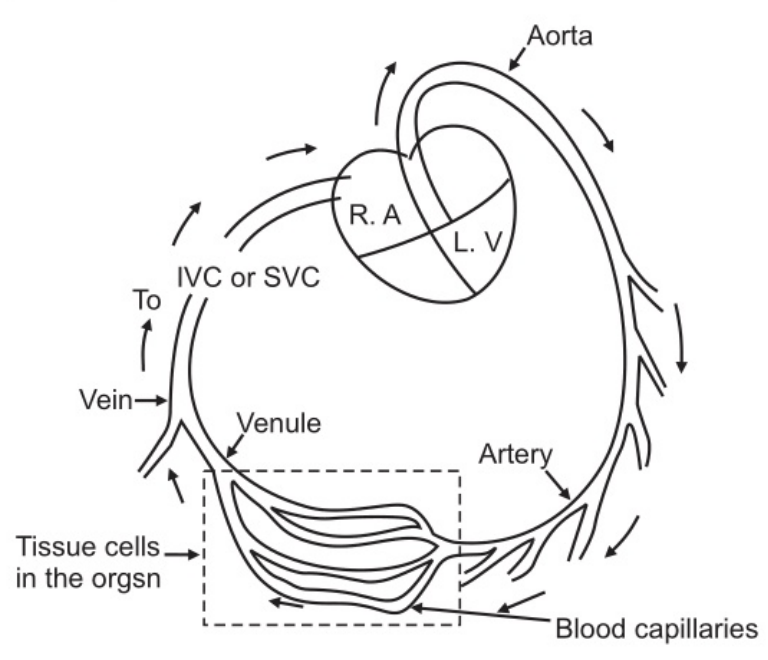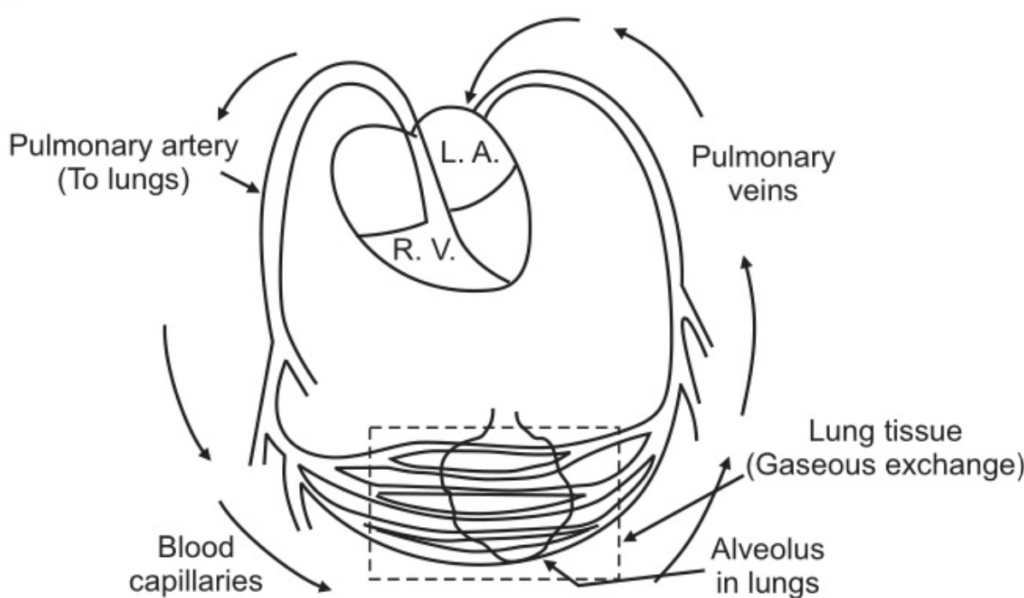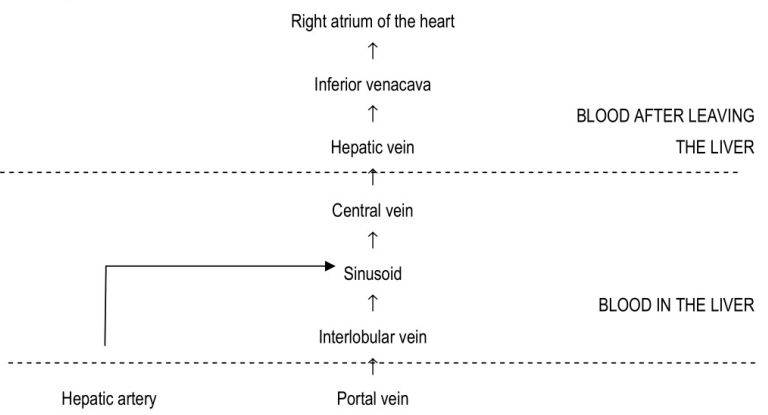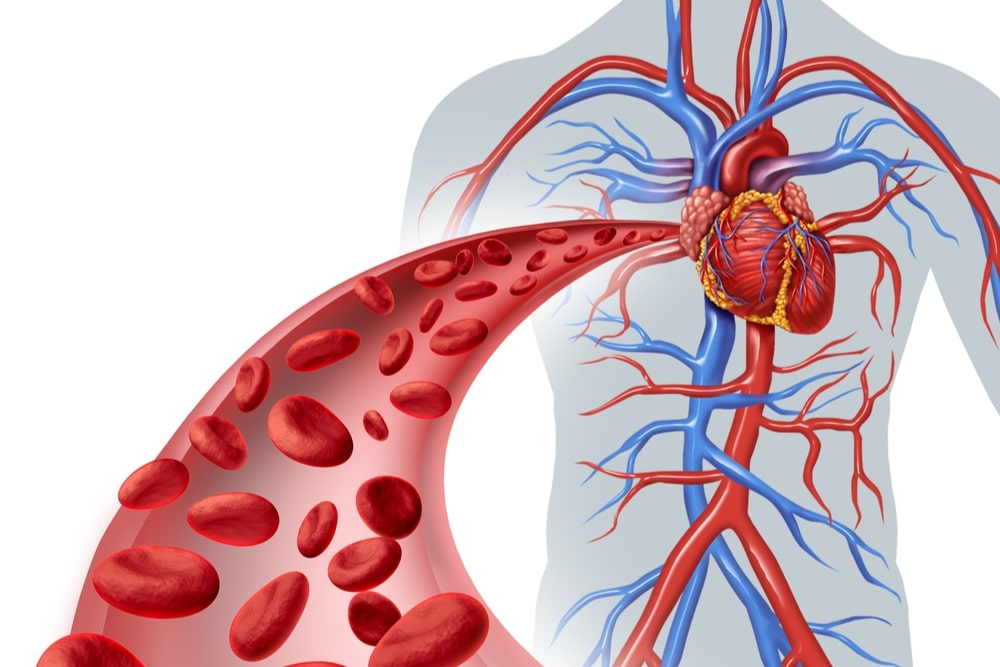The heart is a large muscular organ that constantly pumps oxygen-rich blood to the brain and extremities while also transporting oxygen-poor blood from the brain and extremities to the lungs for oxygenation. Blood circulation in Heart is the Liver, kidneys, and brain are the organs which get constant blood supply. There are three types of blood circulations in the human body, viz.,
- Greater circulation or systemic circulation;
- Pulmonary circulation or lesser circulation; and
- Portal circulation.
Greater Circulation
The oxygenated blood from the left ventricle is forced into the aorta. The aorta divides and redivides to form arteries, arterioles, and finally the blood capillaries. The walls of blood capillaries are very thin (made up of a single layer of flat epithelium). Hence, oxygen and food material from the blood in the capillaries is passed to the tissue fluid. It is then supplied to the body cells. The same set of blood capillaries collects the waste material from the body cells. They unite to form venules. Different venules unite to form veins. The veins pour their blood content either into the superior vena cava or inferior vena cava. These vena cava bring the deoxygenated blood to the right atrium of the heart. This course of the blood from the left ventricle to the right atrium is called greater circulation.

Pulmonary Circulation
The deoxygenated blood from the right ventricle is forced into the pulmonary artery. The pulmonary artery divides into two branches each carrying blood to right and left lungs. In the lung tissue, the artery divides and redivides to form a net of blood capillaries surrounding the alveoli. Thus, the blood in blood capillaries and oxygen in the alveoli are separated by a double layer of flat epithelium (one layer is due to the wall of blood capillary and another due to the wall of alveoli). This membrane is called alveolar capillary membrane. The oxygen from alveoli diffuses through this membrane and passes to the blood in the capillaries. The carbon dioxide from blood capillaries diffuses into alveoli. Thus, the exchange of gases occurs in the lungs causing oxygenation of blood. The oxygenated blood from the right and the left lung is collected by four pulmonary veins and poured into the left atrium. This course of the blood from the right ventricle to the left atrium is called the pulmonary circulation. As it is related only to oxygenation of blood occurring in the lungs, it is called lesser circulation.

Portal Circulation
The venous blood from the digestive organs such as the small intestine, stomach, and pancreas is collected by the portal vein. It, instead of pouring its content into inferior vena cava, pours it into the liver. The portal vein is formed by joining together the veins such as splenic vein from spleen, inferior mesenteric from rectum and colon, superior mesenteric vein from the small intestine, gastric vein from the stomach, and cystic vein from the gall bladder. In this way, blood with a high concentration of nutrient materials goes to the liver first. The liver is supplied with oxygenated blood by the hepatic artery. Thus, the oxygenated and deoxygenated blood carried into the liver is mixed and further collected by hepatic veins which pour it into the inferior vena cava. This course of blood through the liver is called portal circulation…

In general, venous blood passes from the tissues to the heart by the most direct route. The only exception is the blood passing from the abdominal part of the digestive system and spleen, in which case, it initially passes via the liver and then to the heart via the inferior vena cava. Because of this ‘portal circulation’, nutrients present in the blood from digestive organs are modified in the liver. This helps in the regulation of these materials to other parts of the body.
Make sure you also check our other amazing Article on: Anatomy Of The Heart
